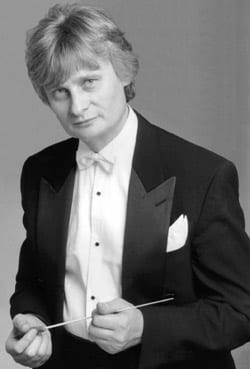On October 29, Maestro Grzegorz Nowak joined the Indiana University Symphony Orchestra at the IU Jacobs School of Music for a “Behind the Score” performance of Igor Stravinsky’s Rite of Spring. Directed by violin professor Jorja Fleezanis—also the Henry A. Upper Chair in Orchestral Studies at IU—the “Behind the Score” program is intended to provide young musicians with significantly deeper knowledge of well-known works of music than is normally provided during the regular round of pre-performance rehearsals. Many of the lectures given to the orchestra members are also open to the public, thereby concurrently developing the cultural knowledge of community members and concert audiences as well.
This year’s “Behind the Score” lectures were given by: musicologist Gretchen Horlacher, about Stravinsky’s musical language and rhythms; ballet department chairman Michael Vernon, on a critical background of Rite as a ballet; and Russian music and Stravinsky scholar Richard Taruskin from UC Berkeley, on a broad history of the piece as both ballet and concert favorite.
Although Maestro Grzegorz Nowak had served as a last minute replacement on the conductor’s stand, according to reviewer Peter Jacobi, no one was disappointed with the substitution. Below is an excerpt from Jacobi’s article, entitled “All involved in ‘Behind the Score’ enterprise deserve kudos”:
[A] dazzling performance [was] led by guest conductor Grzegorz Nowak, who was called in after project co-instigator Cliff Colnot fell ill. The Polish-born Nowak is principal associate conductor of the Royal Philharmonic Orchestra in London and artist-in-residence at Florida International University in Miami. He came with an extensive professional background, and it showed.
The combination of Maestro Nowak’s conducting skills and briefings for students resulted in a riveting performance. Not many long-established professional orchestras could have improved upon what one heard. The hundred or more musicians on stage — from Nowak to violinist Fleezanis (seated inconspicuously at the rear of the first violin section) and to the percussionists in the rear — were in the zone. The wild and shifting rhythms, the severe dissonances, the mounting energy and explosive thrusts, the sudden nervous quiets, the bursts of drum-delivered, brass-supported salvos, the individual and mysterious solos, and the grand sweeps of an orchestra in artistic heat: all the elements above, fully mastered and thrillingly exhibited, were part of this extraordinary performance.
[Sources: press release]
